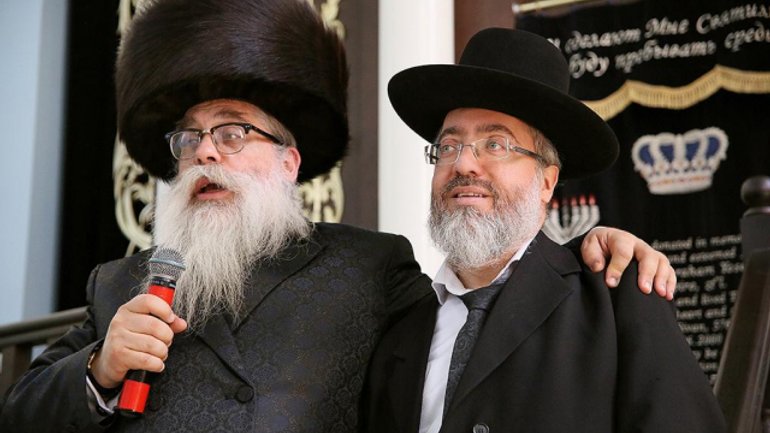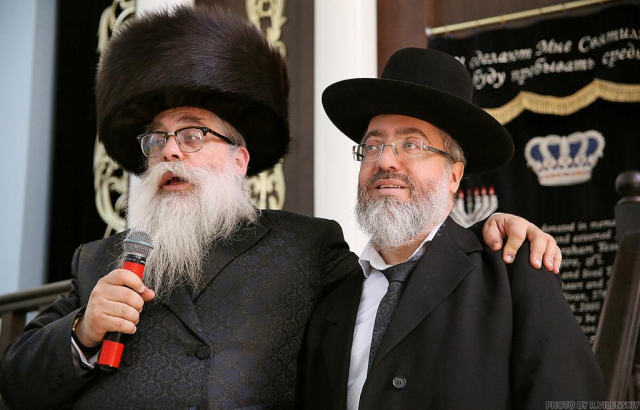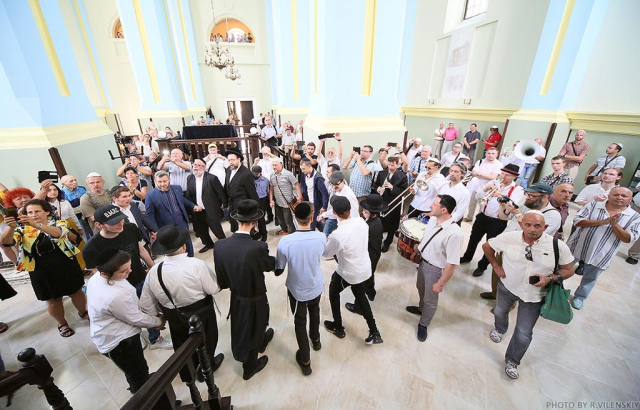Restored choral synagogue of Drohobych receives Torah scroll

A ceremony of bringing a Torah scroll into a choral synagogue -- restored a year ago -- took place in Drohobych, Lviv region.
The Torah scroll was brought in by the Chief Rabbi of Ukraine Yakov Dov Bleich alongside with representatives of Jewish communities from different cities of Ukraine, locals and descendants of the Jewish families of Drohobych who arrived from Israel and the USA. The project of Synagogue restoration has been implemented for over 7 years.
Speaking to the audience, Rabbi Bleich said that: "This event marks another milestone in the revival of Jewish life not only in Drohobych, but throughout Ukraine."

Drohobych choral synagogue was built in the mid-19th century for one of the largest and most prosperous communities in Halychyna which -- according to its current members -- before the Holocaust was home to 17,000 Jews: about half of the then population of the city.
According to various sources, between 11,000 and 14,000 Jews were killed by the Nazis in 1942 and 1943. The oldest members of the community reported that the sixth Prime Minister of Israel, Menahem Begin, and his wife, Alize, got married in the Drohobych synagogue in 1936. Among the guests of the ceremony was Zeev Jabotinsky, the leader of the Zionist revisionists, who was Begin's mentor. The synagogue is depicted in the famous painting by Maurice (Moshe) Gottlieb, "Jews pray in the synagogue in Yom Kippur", which today is part of the exhibition of the Tel Aviv Art Museum. Gottlieb was born in 1856 in Drohobych, which was at that time part of the Austrian Empire, and later of Poland and Western Ukraine.
After the end of the Second World War, the synagogue building was first used as a warehouse for fabrics, and salt storage. Then, as a furniture store. Food warehouses were located in the adjacent space. In the 1990s, the building was given to the Jewish community of the city, but later it was looted and set on fire. For many years, it was in disrepair until the reconstruction of the synagogue began in 2013. This is reported by Galinfo.









